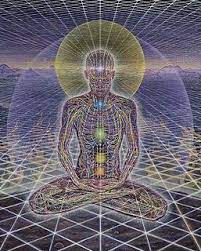Breath-asana

For our last meeting with Prashant Iyengar this month, he took us on the journey of the breath. Where to even begin is the question, as he left us with so much. For example, he mentions off handedly that there are 335 Prana-kriyas to approach within asana – 335 different ways to look at, explore, and discover the various ways Prana interacts with asana. And prana is only one process in itself, so to think of all the other permutations of Body-Mind-Breath connections is, as he said yesterday, a bit “brain spinning”.
The simplest thing is that to begin down the road of “Breath-set addressal” you must first have some mastery of simple asana. It is within simple asanas that complex pranayama (regulation of the breath) can begin. In The Yoga Sutras, it states that Pranayama can only be “practiced after perfection in asana has been achieved”, but we have to admit that we are not going to be doing Pranayama in complex poses like Vrischikasana (scorpion) or Paripurna Matsyendrasana (full Lord of the Fishes seated twist). The complex postures are to open up new areas and understandings within the “laboratory of asana”, but sensitivity cannot happen. “Asana is a qualifier of pranayama, but pranayama will evolve your asana”.
And there is a reason that Pranayama is called what it is. Shvasa is the actual translation of individual breath, but prana is the life force that runs through the entire Universe. The practice of Pranayama runs far beyond just a “control or manipulation of the breath” and leads us to powerful connections throughout our being.
Each asana holds a shape and a form that changes the scope and experience of the breath. We have to become attuned to and sensitive to these processes and patterns on every level, and so to embark on the practice of Pranayama we must also be knowledgable of the Koshas – layers of our being. Prashant mentions that we must actually be “circumspect” in our approach to yoga and not focused. Focusing in on one thing, we lose the rest of the picture, so to look from many different angles and possibilities we get back to the “prismatic effect of asana” that he spoke of yesterday.
He had us move a bolster to different areas of support to experience the differing breath processes. He reminded us that the “velocity, plane, thickness, or thinness” of the breath will change according to the asana. And then how we use the “breathing organs” may differ as well. The breath physically moves in the respiratory system, but prana permeates our being, so we have to expand our feeling and breathing into any space and organ we may comprehend – pelvis, diaphragm, brain, face, back, etc…
I am glad he also spent some time on the experience of sound forms in asana, something he has touched on in India, but not yet enough for me to truly catch it. Today he spent a little more time in explanation of the profound nature of sound and how it is “the charmer of the breath”. Like the snake charmer uses the pungi to summon the snake, the use of sound awakens the pranic energy within us. Humans are the only species to have speech and a wide variety of sounds, each stemming from the same place to create different languages. No word can be spoken without basic sounds and those sounds can be used as powerful tools to transform our energy (bija mantras).
All in all, there are so many ways to look at the BODY-MIND-BREATH phenomenon as it plays out within this laboratory of asana. He mentioned many of his books today, but the one that stood out to me most was “Yogasana (the 18 Maha Kriyas of Yogasana)”. What I love about Prashant is that no matter where you start, he drives you farther into your practice, arming you with so many tools and lenses that nothing can possibly be left out.